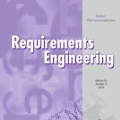Vision videos are established for soliciting feedback and stimulating discussions in requirements engineering (RE) practices, such as focus groups. Different researchers motivated the transfer of these benefits into crowd-based RE (CrowdRE) by using vision videos on social media platforms. So far, however, little research explored the potential of using vision videos for CrowdRE in detail. In this paper, we analyze and assess this potential, in particular, focusing on video comments as a source of feedback. In a case study, we analyzed 4505 comments on a vision video from YouTube. We found that the video solicited 2770 comments from 2660 viewers in four days. This is more than 50% of all comments the video received in four years. Even though only a certain fraction of these comments are relevant to RE, the relevant comments address typical intentions and topics of user feedback, such as feature request or problem report. Besides the typical user feedback categories, we found more than 300 comments that address the topic safety, which has not appeared in previous analyses of user feedback. In an automated analysis, we compared the performance of three machine learning algorithms on classifying the video comments. Despite certain differences, the algorithms classified the video comments well. Based on these findings, we conclude that the use of vision videos for CrowdRE has a large potential. Despite the preliminary nature of the case study, we are optimistic that vision videos can motivate stakeholders to actively participate in a crowd and solicit numerous of video comments as a valuable source of feedback.
翻译:不同研究人员通过在社交媒体平台上使用视觉视频,推动将这些惠益转换成基于人群的 RE(CrowdRE) RE (CrowdRE) 。 然而,迄今为止,几乎没有研究详细探讨为 CrowdRE 使用视觉视频的潜力。在本论文中,我们分析和评估这一潜力,特别是以视频评论为重点,重点以视频评论为重点,作为反馈来源。在一项案例研究中,我们分析了YouTuTube的视觉视频视频视频视频(如焦点小组等)中的4505项评论。在一项案例研究中,我们分析了YouTuTube的视觉视频视频视频视频视频视频(如焦点小组等)中的4505项评论。我们发现,该视频在4天里从2660观众中征求了2770项评论。这占四年里收到的视频视频所有评论的50%以上。尽管这些评论中只有一定一部分与RE相关,但相关评论涉及用户反馈的典型意图和话题,例如功能请求或问题报告等。我们除了典型用户反馈类别外,还发现300多份针对安全议题的评论,而以往用户反馈来源的反馈反馈分析中没有出现。在自动化分析中,我们比较了3个机器学习视频评论的绩效评论的表现。尽管存在某些差异,但是在分析中,但是,我们用大量的算算算算法将影像分析中,我们利用了大量的影像的影像分析中,我们用了大量的影像分析,我们使用这些影像的影像分析,我们利用了大的影像分析,我们使用这些影像分析,我们使用了这些研究,我们用影像分析,我们利用了这些研究,我们利用了这些研究,我们用影像的样本研究,我们使用这些研究,我们使用这些研究的样本的样本研究,我们使用这些研究,我们使用了这些研究的样本研究,我们使用了这些研究,我们使用了这些研究,我们使用了这些研究的样本研究的样本研究,我们使用了这些研究,我们使用了这些研究的样本研究,我们使用了这些研究的样本的样本研究,我们使用这些研究的样本研究,我们使用这些研究的样本研究,我们使用这些研究的样本研究的样本研究,我们使用这些研究,我们使用这些研究。 研究,我们使用这些研究,我们使用这些研究,我们使用这些研究。 研究的样本研究,我们使用这些研究的样本研究的样本研究,我们使用这些研究






